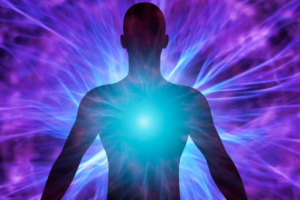Have you ever wondered what happens to us after we die? Near-death experiences have been documented for centuries, but it wasn’t until the last few decades that they have been studied scientifically.
These experiences are often described as transcendent and mystical and can leave a profound impact on those who have had them.
In this article, you will explore the characteristics, theories, and interpretations of near-death experiences, as well as the common themes and patterns that emerge from them.
By understanding these experiences, you may gain a deeper appreciation for the mysteries of life and death.
Near-death experiences can be described as a state of consciousness that occurs when a person is on the brink of death or has been declared clinically dead before being revived.
They often involve a range of sensations, such as an out-of-body experience, a feeling of peace and love, a tunnel of light, and encounters with deceased loved ones or spiritual beings.
Some people report having a life review or a sense of understanding the mysteries of the universe.
Others report being given a choice to stay or return to life.
While the experiences themselves are subjective and vary from person to person, there are common themes and patterns that emerge from them.
Understanding these experiences can provide insight into the human experience and the nature of consciousness.
The Characteristics of Near-Death Experiences
You might be surprised to learn what people commonly report experiencing during moments that are considered to be close to the end of life.
Near-death experiences (NDEs) are often described as profound, life-changing events that can occur during a life-threatening situation.
Some of the most commonly reported characteristics of NDEs include feelings of peace, detachment from the physical body, and a sense of traveling through a tunnel towards a bright light.
Other experiences that can occur during NDEs include encountering deceased loved ones, experiencing a life review, and perceiving a sense of unity with the universe.
Psychological effects of NDEs can be profound and long-lasting.
People who have undergone NDEs often report feeling more spiritual or less afraid of death, as well as experiencing a greater appreciation for life.
However, NDEs can also have medical implications.
Some researchers have suggested that the experiences may be caused by a lack of oxygen to the brain, while others have proposed that they may be a result of the brain’s response to trauma.
Regardless of the cause, understanding NDEs can be important for medical professionals who may encounter patients who have undergone these experiences.
Scientific Theories Explaining Near-Death Experiences
Now, you’ll dive into the scientific explanations for those inexplicable moments when the veil between life and the beyond seems to lift, and you’ll see what science has to say about what might be happening in those moments when you’re seeing that light at the end of the tunnel.
One of the most widely accepted scientific theories explaining near-death experiences is the neurological explanation. According to this theory, the experiences are a result of the brain’s response to stress and lack of oxygen. When the brain is deprived of oxygen, it may create hallucinations or distortions of reality, which can lead to near-death experiences.
Another scientific theory that explains the differences in near-death experiences across cultures is the cultural differences theory. This theory suggests that the experiences are shaped by cultural beliefs and expectations. For example, some cultures may expect to see certain religious figures or symbols during near-death experiences, while others may not.
Additionally, cultural beliefs about death and the afterlife may influence the individual’s perception and interpretation of their near-death experience.
Overall, scientific explanations for near-death experiences continue to evolve as researchers gather more data and develop new theories to explain these mysterious and transformative moments.
Spiritual Interpretations of Near-Death Experiences
Let’s explore the spiritual interpretations of what happens when we cross over to the other side. Religious beliefs have a significant impact on how people interpret near-death experiences.
Some believe that these experiences are proof of an afterlife, where the soul continues to exist after death. This belief is rooted in various religious concepts of an afterlife, such as heaven, hell, or reincarnation.
For instance, those who believe in reincarnation often interpret near-death experiences as a glimpse into their next life. They view these experiences as a way of receiving a message from a higher power, telling them to continue on their spiritual journey.
Similarly, those who believe in heaven or hell may interpret near-death experiences as a preview of what awaits them in the afterlife. Overall, spiritual interpretations of near-death experiences often involve connecting the experience with religious concepts and beliefs to provide comfort and reassurance about what happens to us when we die.

By understanding the mind-body connection, you can use yoga as a tool to enhance your spiritual practice and deepen your connection with yourself and the world around you. Read more: The Mind-Body Connection
Common Themes and Patterns in Near-Death Experiences
Get ready to feel awe and wonder as we explore the common themes and patterns that emerge from those who’ve had near-death experiences and returned to tell the tale.
Despite cultural differences and skepticism or criticism from some, these experiences often share similar elements. Many report a sense of leaving their body and traveling through a tunnel towards a bright light. They may encounter deceased loved ones or spiritual beings and feel a sense of overwhelming peace and love.
Some describe a life review, where they relive significant moments and feel the impact of their actions on others. Additionally, many near-death experiences involve a sense of being shown or told something important, such as a life purpose or mission.
Others report a choice to return to their physical body, often motivated by a desire to continue living for the sake of loved ones or to fulfill a particular goal. Interestingly, these experiences can have a profound impact on the individual’s beliefs and attitudes towards life, death, and spirituality.
The common themes and patterns in near-death experiences suggest that there may be more to our existence than what we can perceive with our physical senses, and invite us to consider the possibility of a greater spiritual reality.
Implications for Understanding Life and Death
Exploring the implications of common themes and patterns in near-death encounters can shed light on our perception of existence.
Philosophical questions about the nature of life and death, the afterlife, and the meaning of existence can be examined through the lens of near-death experiences. These experiences can provide insight into what happens when we die and what, if anything, exists beyond our physical bodies.
It’s interesting to note that 75% of individuals who’ve had near-death encounters report a profound change in their belief system. This suggests that these experiences can have significant existential implications.
They can challenge our current understanding of reality and our place in the universe and can lead to a deeper appreciation for the mystery and wonder of existence.
Ultimately, exploring near-death experiences and their implications can help us better understand the nature of life and death and can lead to a more meaningful and fulfilling existence.
Conclusion
In conclusion, understanding near-death experiences can provide a new perspective on life and death. The common themes and patterns found in these experiences suggest that they aren’t just random hallucinations, but rather a glimpse into a transcendent realm.
Scientific theories attempt to explain these experiences through brain activity, but spiritual interpretations suggest a deeper connection to a higher power. So, what does this mean for our understanding of life and death? Can we look at death not as an end, but rather a transition to a new existence?
While there may never be a definitive answer, exploring near-death experiences can open up a new realm of possibilities and offer comfort to those facing mortality. It may even lead to a more profound appreciation for life itself.



